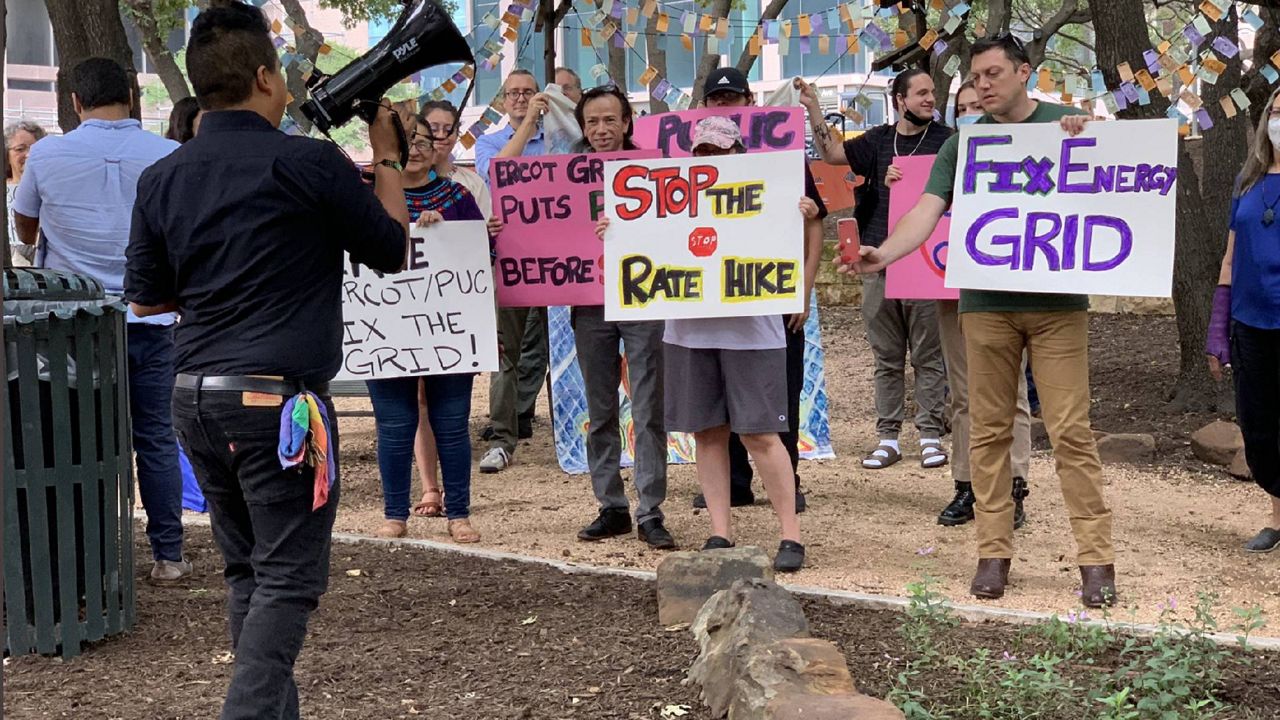Reducing energy demand is the cheapest, cleanest and easiest way to fix the Texas electric grid, a coalition of environmental groups told the Public Utility Commission last week.
The coalition, led by the Lone Star Chapter of the Sierra Club, is relying on the sharp increase in summer electric bills to add some momentum behind its recent rule-making petition, which the PUC must act on within 60 days. Multiple speakers addressed the PUC last week, talking about conservation as a tool to keep costs down. The petition can be found here.
Craig Nazor is a retired Austin music professor who lives on a fixed income. He took an unexpected windfall — an inheritance from a distant relative who made his money in the oil business — to guarantee his home was energy efficient. Every measure he took came with some sort of rebate from Austin Energy.
“I got triple-pane windows. I got a metal roof. I got extra insulation blown in. I got a SEER 27 air conditioning and heating system,” said Nazor, who is also a Sierra Club board member. “Because I lived in a house with no air conditioning for six years in Austin, I know what it is like. And, yes, climate change is real. I know it’s real, so I’m trying to plan for it.”
By the time Nazor got 10 solar panels installed in January, his contractor was telling him Nazor’s house was one of the most energy efficient he had ever seen.
“My electric bill in June was $10. My bill in July was $10. We need to let everybody in on this,” Nazor told the PUC members. “Not everyone is going to be lucky enough to have a (relative) in Midland/Odessa who lands a bunch of money on top of you.”
The fact Nazor could get rebates from Austin Energy is not happenstance. Nor is the repair work electric utilities do to help low-income people winterize their homes. These measures — which make the electric grid in Texas more efficient and less costly — are embedded in goals the PUC sets for utilities.
The PUC adopted a multi-phase blueprint to fix the Texas electric grid in December. Conservation was just one bullet point on that list. Environmental groups are urging the PUC to move more quickly on the areas of energy efficiency and peak demand.
“No one’s taken action yet, so we at the Sierra Club did file a petition for rulemaking. Any stakeholder who’s listening can file,” Cyrus Reed, the Sierra Club’s conservative director, told the PUC. “If you like our petition, say you like it. If you don’t, say you don’t like it and why you don’t like it.”
The goals the PUC has set out for the eight private electric utilities in the state are “very, very, very, very modest,” Reed said after the meeting. Here are some actions that environment groups say could help fix the grid and bring the cost of electricity down in Texas:
- Peak demand goals should be raised for utilities. Utilities must guarantee annual growth of 4% of their peak summer demand. That goal, however, was set in 2011. A more recent legislative study indicated 7% annual growth was a feasible goal, but the PUC never acted on it.
- Goals should be set for both summer and winter peak demand. Currently, utilities focus almost exclusively on summer capacity, one reason the winter storm of 2016 was a problem. Rules should be adjusted so both summer and winter events are of equal importance.
- Energy savings goals — which cover investment in energy-savings programs — should be quadrupled. Right now, the goal is set at .25% of residential and commercial consumption. To make an impact, that goal should be raised to 1% of residential and commercial consumption by 2025.
- The PUC should ask utilities to double their spend on programs that help Texans who struggle to pay their utility bills. The petition suggests such programs go from 10% of program budgets to 20% over the next three years.
- One incentive the PUC can offer utilities is to give them “credit” for reducing transmission and distribution investments due to reduced demand. Right now, the PUC judges utilities on the reduction of generation capacity because of energy efficiency programs. Another factor, which environmentalists label “delayed infrastructure need,” would give credit for reduced energy demand.
- Give utilities credit for cost-effectiveness across an entire portfolio of programs, not on each individual program. This would give utilities an incentive to add more programs, even if one is not as cost effective as others, as long as the larger portfolio is cost effective.
- Raise the cap on energy efficiency programs. Right now, the minimum amount a utility can spend on energy efficiency programs is $1.43 per month on the average bill. The petition suggests an increase to $3 per month over the next three years is a more reasonable rate. It’s also more in line with what leading utilities, such as Austin Energy, spend.
- Performance bonuses for utilities should be limited, and those bonuses should be based on program costs and not avoided costs. Large private utilities like Oncor and CenterPoint Energy have been earning bonuses of roughly 30% to 40% of their program budget, which is extreme.



